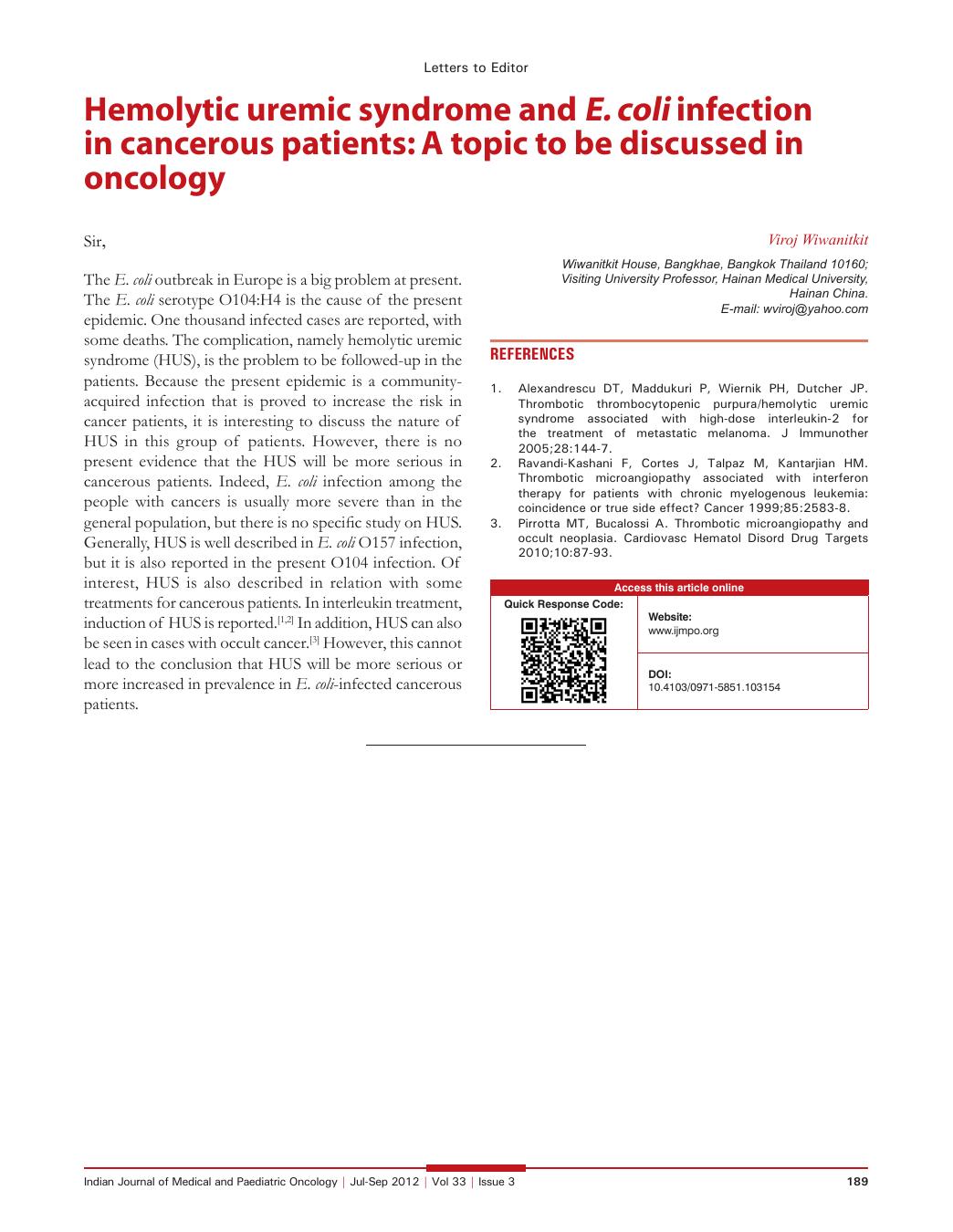Hemolytic uremic syndrome and E. coli infection in cancerous patients: A topic to be discussed in oncology
CC BY-NC-ND 4.0 · Indian J Med Paediatr Oncol 2012; 33(03): 189
DOI: DOI: 10.4103/0971-5851.103154

Publication History
Article published online:
02 August 2021
© 2012. Indian Society of Medical and Paediatric Oncology. This is an open access article published by Thieme under the terms of the Creative Commons Attribution-NonDerivative-NonCommercial-License, permitting copying and reproduction so long as the original work is given appropriate credit. Contents may not be used for commercial purposes, or adapted, remixed, transformed or built upon. (https://creativecommons.org/licenses/by-nc-nd/4.0/.)
Thieme Medical and Scientific Publishers Pvt. Ltd.
A-12, 2nd Floor, Sector 2, Noida-201301 UP, India
Sir,
The E. coli outbreak in Europe is a big problem at present. The E. coli serotype O104:H4 is the cause of the present epidemic. One thousand infected cases are reported, with some deaths. The complication, namely hemolytic uremic syndrome (HUS), is the problem to be followed-up in the patients. Because the present epidemic is a community-acquired infection that is proved to increase the risk in cancer patients, it is interesting to discuss the nature of HUS in this group of patients. However, there is no present evidence that the HUS will be more serious in cancerous patients. Indeed, E. coli infection among the people with cancers is usually more severe than in the general population, but there is no specific study on HUS. Generally, HUS is well described in E. coli O157 infection, but it is also reported in the present O104 infection. Of interest, HUS is also described in relation with some treatments for cancerous patients. In interleukin treatment, induction of HUS is reported.[1,2] In addition, HUS can also be seen in cases with occult cancer.[3] However, this cannot lead to the conclusion that HUS will be more serious or more increased in prevalence in E. coli-infected cancerous patients.


 PDF
PDF  Views
Views  Share
Share

